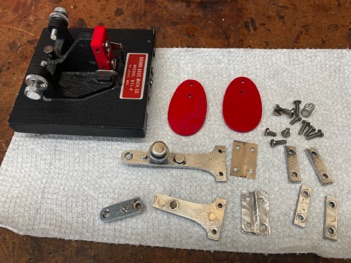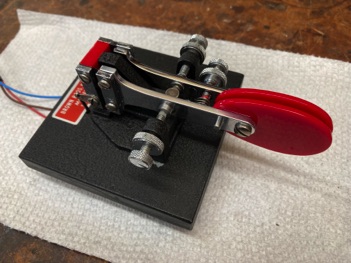My Love of Semiautomatic Keys (Bugs)
Real telegraphers know how to handle a bug, or semiautomatic key. Invented in the early 1900s, they allowed operators to send faster by making the dots automatically, and with less strain on their wrists and arms due to the more natural side-to-side motion. Today, thousands of hams like me still enjoy using this classic tool for sending Morse code.
My first bug was a 1963 Vibroplex Deluxe Original. It’s a beautiful machine, all chrome and with the famous red finger pieces. I had admired the ads for this bug since I was a teenager, and finally got one. It took me a year of practicing with it until I thought I was good enough to actually operate with it on the air.
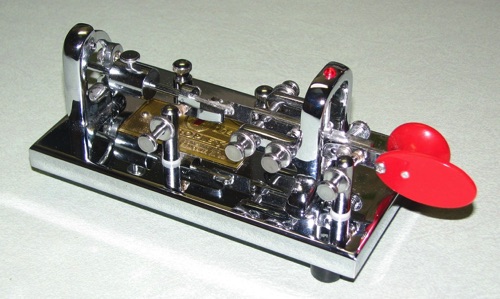
On to Something Older
Then I bought a real classic key, a 1938 McElroy Deluxe. This one is very well respected for its performance as well as its looks, featuring a faux marble finish.
It did require some restoration to remove rust and to clean and re-plate the oxidized nickel-plated parts. I also made a new weight (to slow it down a bit) and a new thumbnut for the dash spring. Turns out there is an excellent book covering restoration procedures: Telegraph Key Restoration by W. R. Smith, W4PAL (SK). He was an old clockmaker who really knew his stuff and the content of the book is priceless.
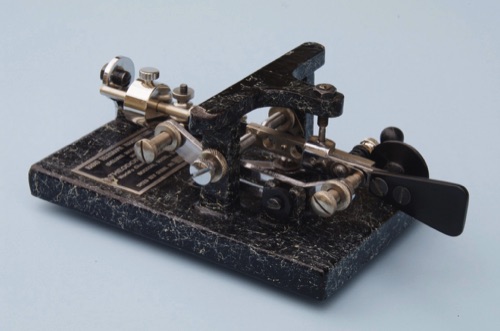
Bug Debouncing (Descratching)
Bugs often suffer from contact bounce, and modern transmitters seem to be even more susceptible to this than classic rigs. While better operator technique and careful key adjustment are of course mandatory, the problem often remains and yields annoying and unacceptable signals.
So I built a debouncing circuit. To keep RF out, build it into a cast metal box and be sure the bypass caps are right on the connectors. It only draws 1 µA so there is no need for a power switch. It adds a small delay, but more critically, it does not change the pulse duration (weighting).

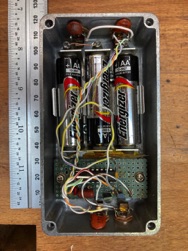
The Woodbug
This may be the world’s only bug built entirely from wood (except for screws and small bits of hardware). I designed this for me, with the objective of simulating the very low inertia and sensitive actuating forces of my Begali paddle. It took about four months to work out the material selections and fabrication methods. There’s nothing else quite like it. Read the full story. If you want to see more, here are photos of the development and fabrication process. This key won the 2019 ARRL key competition and appears in the October 2019 issue of QST.

In early 2018, I did a short production run of five Woodbugs with some minor changes. Proud owners are W4CI, KT5X, W9YA, NA6M, and IZ0KRC. Below is a photo of the one for VE5SDH (SK), who was a blind ham, so I put her callsign on it in Braille. W4CI has this key now.
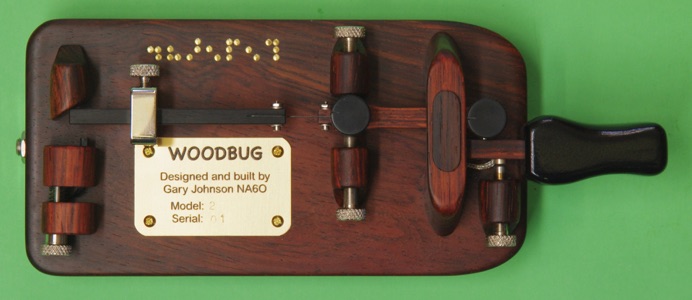
Here are a couple of bug transport cases I made to fit my 1938 McElroy and 1963 Vibroplex. They’re modeled after the ones Vibroplex offered as an accessory.

I regularly do repairs and refurbishment of all types of Morse keys: Bugs, paddles, and straight keys. Whether it just needs a good cleaning and adjustment or it's missing irreplaceable parts, I can do the job. Very reasonable prices, not much more than the cost of parts/materials and shippping. Conatct me with any questions.

Morse Key Repairs
